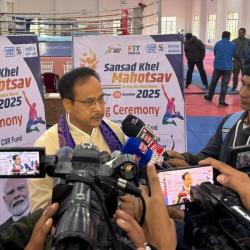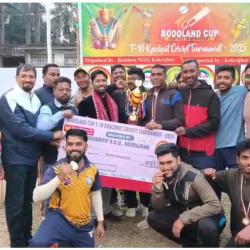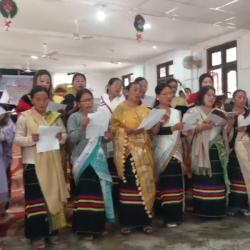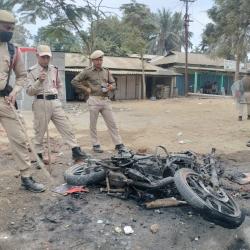One of the common features of developing countries in the South East Asia is flash flood in urban areas during rainy season and acute shortage of water for domestic and agricultural uses during winter. Rural areas are situated usually at upstream receives adequate rain, with no facilities to conserve the water for winter. North-East India receives high rainfall of an average of 2000 mm a year with a maximum of 11000 mm in Cherrapunjee. Average annual surface water potential of 585.6 km3 has been assessed in this region, which is highest among all the river systems in India and fifth in the world. Out of this, 24.0 km3 is utilizable water and is merely 4.1% of annual surface water potential. Culturable area of the basin is about 13.04 MHa, which is 7.1% of the total culturable area of the country. The Brahmaputra River carries heavy sediment load of the order of 799 million tones per annum (fifth severe most in the world), because of friable nature of the hills in its upstream catchment areas, high intensity of rainfall and seismicity in the region. The distribution of water resources potential in the country shows that as against the national per capita annual availability of water as 2208 m3 the average availability in North East because of Brahmaputra and Barak rivers is as high as 16589 m3. However, this vast water resource remains unutilized and creates problems in the entire region in many ways. This necessitates change in perspective of water management in the region.
Rural hilly areas are there at the upstream receiving end and the urban plain areas are usually at down streams. Most of rain occurs during the monsoon and little or no rains during winter. Occurrence of heavy rains during monsoon causes heavy soil erosion in the upstream rural areas in the hills and flash floods in the downstream urban areas. Winter is marked by drought and subsequent lowering of ground water level, both at upstream hills and downstream plains. The water stress leads to lesser cultivation practice during winter in the upstream rural areas. The conventional approach to solve these problems is to take steps by urban and rural boards and authorities separately. However, this is not a scientific approach, because the rural upstream and urban downstream are related hydrologically and thus necessitates an integrated management practice.
Watershed being a geographical area constituted by locations of hydrological interdependency may be taken up for management to bridge the urban and rural division. Integrated watershed management emphasizes on development and utilization of land, vegetation and water for optimum production. Morphological and hydrological parameters are to be evaluated at first and availability of surface and ground water should be assessed at prominent locations in the watershed. Existing land use practices need to be assessed in detail. Management plans should be participatory and active involvement of the end users is essential. The plans should not aim at altering an existing system rapidly; rather a gradual change of the existing system proves better.
In case of small watersheds, conservation of rainwater for winter season can be achieved by construction of water harvesting ponds at mid slope or at foot of the hills. Pond water may be used for irrigation, fishery etc. This enables cultivation during winter also without aid of any rain. On the other hand, it reduces the peak flood of the rivers during monsoon in the downstream urban areas.
Another reason of flood in plains is the reduced carrying capacity of the rivers due to sedimentation of the eroded soil carried from the upstream rural areas. Agriculture being the common land use of every household, adoption of suitable soil conserving practices of cultivation using terraces and bunds supported by vegetative barriers in the hill slopes is advisable to reduce the chances of soil erosion. Small structures may be constructed across the streams to reduce the flow velocity or grassed waterway may be adopted to reduce the channel erosion. Construction of vegetative barriers, retention structures and dams in the upstream hills could be one of the best ways to achieve the goals of reduced flood peak, enhance groundwater recharge by storing flowing out water in the reservoirs, and develop irrigation schemes. Upon having a high head, the dam will also be able to generate electricity.
It can be realized that water being regulated many ways in the upstream areas, cleaner and more uniform river flow is observed in the downstream plains areas. A proper watershed management practice is the best way to bridge the urban/rural division and arrive at all round development of the region considering the entire North East as a unit. The states of the North East region are separated on political grounds, but all are hydrologically interrelated. It is necessary for all state authorities to come forward to a common platform to address the issues related to water resources in order to chalk out plans for holistic development of the region. It will not only intensify agricultural operations but also will reduce flood, create more avenues for employment in both urban and rural areas, feeling of interdependence and brotherhood and above all peace in the region.
- Add new comment
- 25147 reads










Comments
Pages
Add new comment